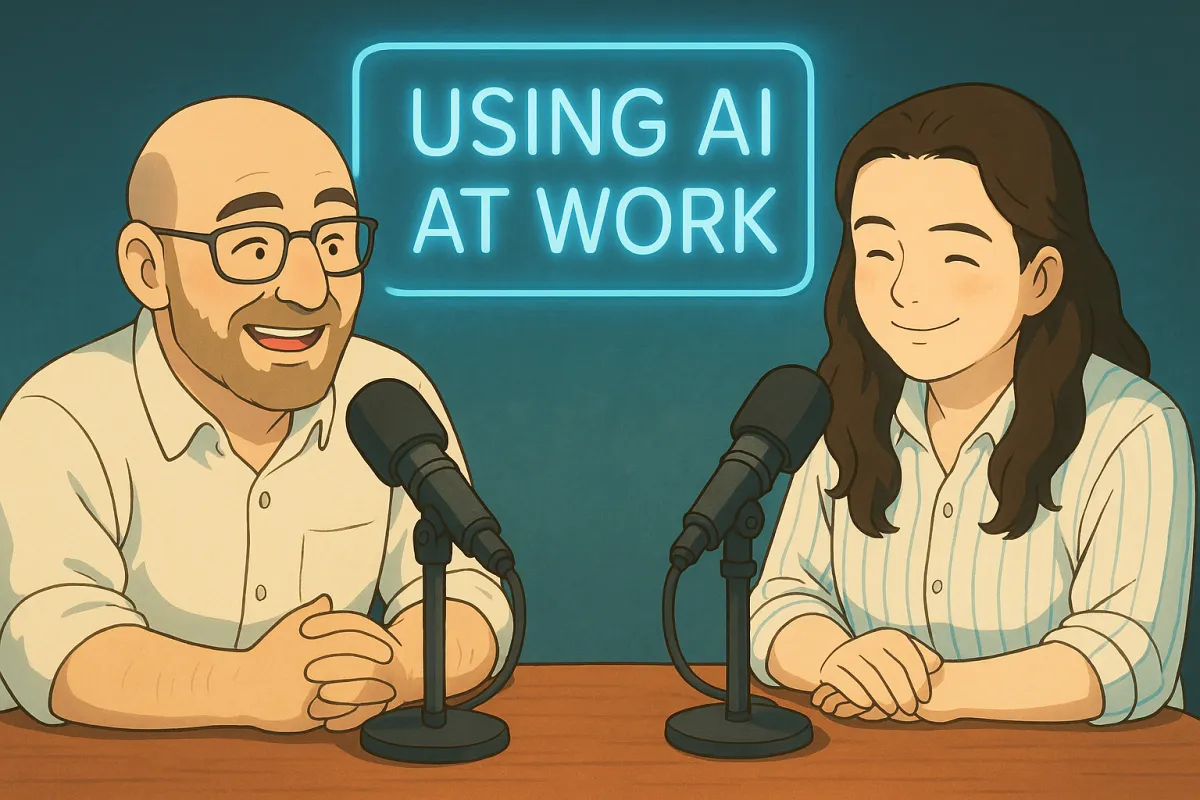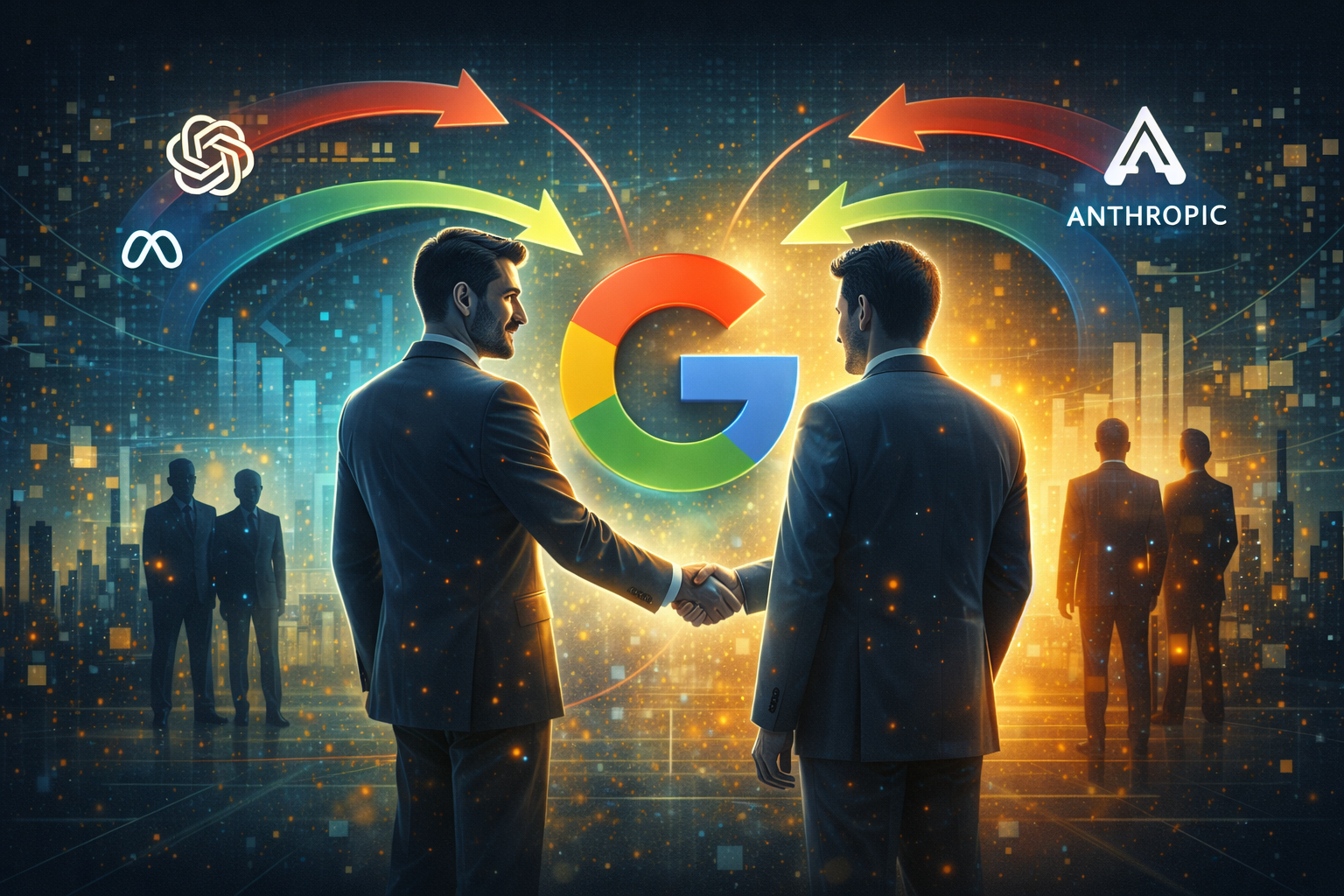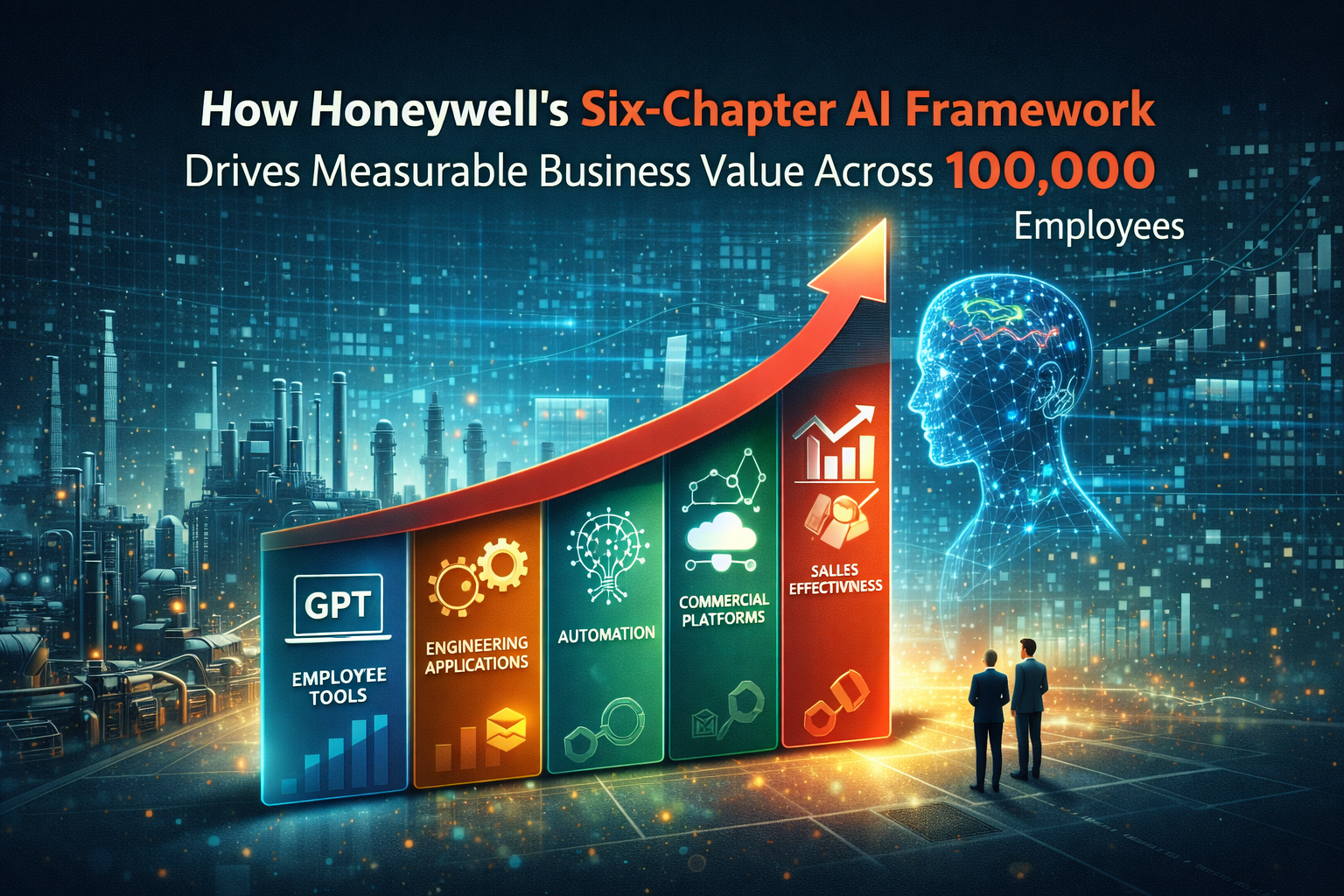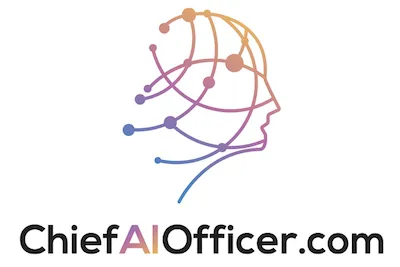How to Use AI at Work Without Being Replaced: Strategies for Job Security and Career Growth with Steff Vanhaverbeke
Artificial intelligence transforms the workplace by automating routine tasks, yet professionals who harness AI strategically can secure their roles and accelerate career growth. By mastering AI skills, integrating the right tools, and cultivating human-AI collaboration, you can turn potential job displacement into opportunity. This guide by Steff Vanhaverbeke explains the real impact of automation, essential upskilling paths, productivity enhancements, resilience strategies, ethical use, and performance measurement—empowering you to thrive rather than be replaced. By embracing change and staying informed, professionals can leverage AI in ways that enhance their value within organizations. These ai in the workplace insights highlight the importance of continuous learning and adaptability in an ever-evolving technological landscape. Ultimately, those who proactively engage with AI will not only safeguard their positions but also position themselves as leaders in innovation and efficiency.
Human-AI Collaboration: Amplifying Human Potential
Human-AI collaboration combines human creativity, critical thinking, and contextual understanding with AI’s speed, precision, and data processing capabilities to achieve superior outcomes.
This source highlights the benefits of human-AI collaboration, which is a key theme in the article.
What Is the Real Impact of AI on Jobs and Job Security?
AI reshapes job functions by automating repetitive processes and augmenting decision support, delivering faster outcomes while requiring new human oversight. Understanding this evolution reveals where displacement risk is highest and where demand for hybrid skills is growing.
How Does AI Affect Job Replacement and Automation Risks?
AI accelerates task automation by learning patterns in data, which can displace roles heavily reliant on routine processing. This displacement risk contrasts with job creation in oversight, data analysis, and AI system training.
The Impact of AI on Job Roles, Workforce, and Employment: What You Need to Know
AI is expected to create 20-50 million new jobs globally by 2030, while also automating routine tasks and potentially displacing workers in certain industries.
This source provides insights into the potential job creation and displacement effects of AI, which is relevant to the article’s discussion of job security.
By evaluating workflow overlaps between human judgement and algorithmic efficiency, professionals can anticipate shifts and pivot toward tasks that require creative problem-solving and emotional intelligence—areas where AI currently underperforms. This proactive approach not only enhances overall productivity but also fosters a more engaging work environment. Embracing these shifts allows individuals to harness the benefits of AI in careers, leveraging technology to manage routine tasks while focusing on innovative and interpersonal challenges. Ultimately, this synergy between human capabilities and AI tools can lead to more fulfilling and impactful professional experiences.
Which Jobs Are Most and Least at Risk from AI?
Different roles face varying displacement rates based on task complexity and standardization. The table below categorizes common job families by AI exposure, highlighting where upskilling is most urgent.
| Industry | Risk Level | AI Displacement Rate |
|---|---|---|
| Data Entry & Administrative | High | 60–80% |
| Customer Service (Basic) | Elevated | 50–70% |
| Marketing Analytics | Moderate | 30–50% |
| Software Development (Specialized) | Lower | 20–35% |
| Creative Design & Strategy | Low | 10–25% |
| Executive Leadership | Minimal | <10% |
High-risk roles often involve predictable workflows suited to rule-based AI, whereas leadership and creative strategy rely on contextual judgement. Recognizing this variance guides targeted upskilling efforts toward resilient career paths.
What Are the Economic Implications of AI and Automation?
Automation drives productivity gains with reduced operational costs, yet it can widen skill gaps and exacerbate workforce inequality without strategic policy and corporate upskilling initiatives. On the macro level, AI integration boosts GDP growth by streamlining supply chains and enhancing service delivery, but individual employees must cultivate AI literacy and critical thinking to capture these benefits. The same dynamics that increase corporate efficiency also create opportunities for human-AI partnership roles in data curation, model validation, and ethical oversight.
How Can Understanding AI’s Evolution Help You Adapt?
AI’s progression from rule-based automation to generative deep learning illustrates increasing capability and scope. Early systems replaced simple clerical work; modern generative models now support content creation, research synthesis, and predictive decision-making. Anticipating these shifts enables professionals to align learning roadmaps with emerging AI functionalities, focusing on areas where human intuition complements algorithmic power. Building awareness of AI milestones prepares you to champion adoption and lead transformational projects.
What Essential AI Skills Do Professionals Need to Stay Relevant?

Staying relevant requires a blend of technical proficiency, human-centric skills, and domain expertise. The most prized capabilities include prompt engineering to guide AI outputs, critical thinking to evaluate algorithmic suggestions, data literacy for analysis, and interpersonal skills to design collaborative processes.
How Can You Master Prompt Engineering for Effective AI Use?
Prompt engineering involves crafting model inputs that yield precise, relevant outputs. Start by defining clear objectives and specifying context, format, and constraints. For example:
- Objective Specification – State the goal: “Generate a summary of Q1 sales data focusing on regional trends.”
- Context Inclusion – Provide background: “Include product categories and percentage changes.”
- Constraint Definition – Limit scope: “Keep summary under 150 words, highlight top three regions.”
Practicing these steps with different generative platforms reveals patterns in token selection and phrasing that maximize accuracy. Mastery of this skill turns AI from a black box into a reliable collaborator for research, drafting, and ideation.
Why Are Critical Thinking and Ethical AI Use Indispensable?
Critical thinking complements AI by identifying biases, verifying outputs against domain knowledge, and making situational judgments that algorithms alone cannot. Ethical AI use ensures fairness and trust by recognizing potential data bias, respecting privacy, and seeking transparency in automated decisions. Professionals who champion ethical frameworks mitigate reputational risks and foster responsible innovation, thereby enhancing their strategic value.
How Does Data Literacy Enhance AI-Assisted Analysis?
Data literacy—the ability to read, interpret, and visualize data—amplifies AI’s analytical power by enabling precise question framing and result interpretation. Individuals with data skills can integrate AI-generated insights into reports, dashboards, and strategic presentations. Familiarity with basic statistics, data cleaning, and visualization tools ensures that AI outputs drive actionable business decisions and elevate your role from executor to insight leader.
What Soft Skills Boost Your Value in an AI-Driven Workplace?
Human-centric abilities such as creativity, emotional intelligence, and collaboration remain irreplaceable. Creativity transforms AI suggestions into innovative solutions; emotional intelligence fosters team alignment and change management; and collaborative skills design seamless human-AI workflows. Demonstrating these competencies across projects underscores your adaptability and positions you as a linchpin in AI adoption initiatives.
How Can You Integrate AI Tools into Your Daily Workflows for Productivity?
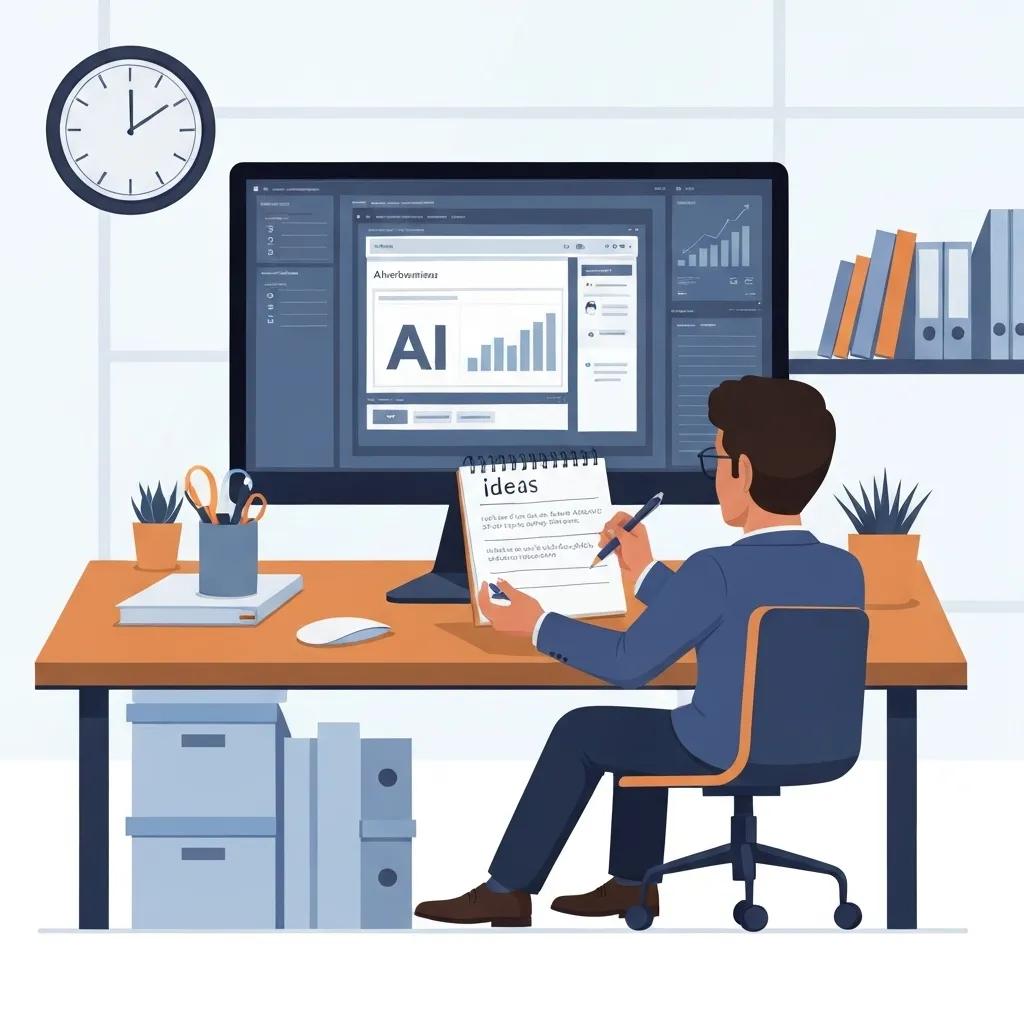
Strategic AI integration goes beyond plug-and-play; it requires mapping repetitive processes, selecting appropriate tools, and refining workflows to amplify productivity while preserving human oversight.
Which AI Tools Automate Repetitive Tasks to Save Time?
Identifying routine tasks—such as email triage, scheduling, and data entry—allows targeted tool deployment:
- Email Automation: AI-driven filters and smart replies handle standard inquiries, freeing time for high-value communication.
- Calendar Management: Intelligent schedulers propose optimal meeting slots and handle rescheduling automatically.
- Data Entry & Processing: OCR and RPA (robotic process automation) extract information from PDFs and spreadsheets, reducing manual errors.
These automations streamline administrative load, enabling professionals to focus on strategy, relationship building, and complex problem-solving.
How Does AI Enhance Research, Content Creation, and Problem-Solving?
Generative AI accelerates ideation by summarizing documents, drafting outlines, and proposing hypotheses. For example, AI tools can:
- Summarize large research papers into concise briefs.
- Draft blog posts or reports with brand-specific tone.
- Suggest solutions based on pattern recognition in past project data.
By iterating prompts and evaluating outputs critically, you leverage AI as a research partner and creative assistant, boosting output quality and reducing turnaround times. This collaborative process not only enhances the quality of your work but also opens the door to innovative ideas and perspectives. As more industries adopt ai applications in the workplace, leveraging AI’s capabilities can lead to significant improvements in efficiency and productivity. Ultimately, this strategic partnership allows you to harness technology effectively, positioning yourself ahead in a rapidly evolving landscape.
What Are Industry-Specific AI Applications to Know?
Different sectors harness AI distinctively:
- Marketing: Predictive analytics optimize campaign targeting and personalize customer journeys.
- Data Analytics: Machine learning models uncover hidden correlations and forecast trends.
- Software Development: AI-powered code completion and testing frameworks accelerate release cycles.
- Finance: Automated risk modeling and fraud detection safeguard transactions.
Recognizing these tailored applications guides you to propose and implement AI pilots that deliver immediate ROI for your functional area.
How Can Strategic AI Use Go Beyond Basic Automation?
Advanced practitioners deploy AI for scenario planning, competitive intelligence, and decision support. By combining generative models with proprietary data, teams can simulate market responses to new offerings, analyze sentiment across customer feedback, and identify emerging threats. Embedding AI insights into strategic workshops and executive dashboards elevates your role from executor to strategic advisor.
What Strategies Can Future-Proof Your Career Against AI Displacement?
Resilience in an AI-augmented economy emerges from proactive upskilling, mindset cultivation, and addressing adoption challenges head-on.
How Do You Build an Effective AI Upskilling and Reskilling Plan?
A structured learning roadmap ensures timely skill acquisition:
- Assess Current Skill Gaps – Benchmark your AI literacy and domain needs against role requirements.
- Select Targeted Courses – Enroll in specialized training for prompt engineering, data literacy, and AI ethics.
- Apply Learnings in Projects – Integrate AI tools into real workflows to reinforce skills.
- Review and Iterate – Collect feedback, measure outcomes, and refine your development plan quarterly.
Upskilling and reskilling priorities for the gen AI era
Organizations should take a cross-collaborative, scaled approach to upskilling and reskilling workforces to realize the opportunity of generative AI.
This source emphasizes the importance of upskilling and reskilling initiatives, which are crucial for adapting to AI-driven changes in the workplace.
This cyclical approach aligns skill growth with evolving AI capabilities and organizational priorities.
Why Is Cultivating a Human-AI Collaborative Mindset Crucial?
Embracing AI as a teammate shifts the narrative from replacement risk to partnership advantage. A collaborative mindset encourages experimentation, knowledge sharing, and co-creation with AI systems. By championing pilot programs and mentoring colleagues on AI adoption, you become a catalyst for transformation and a recognized change agent.
How Can You Overcome Challenges in AI Adoption at Work?
Psychological barriers such as fear of obsolescence and practical hurdles like data quality issues can stall AI projects. Address these by:
- Communicating Benefits – Share success stories and productivity metrics to build trust.
- Ensuring Data Readiness – Collaborate with data teams to establish governance and cleanliness.
- Providing Support – Organize training sessions and office hours for hands-on guidance.
- Iterating Quickly – Launch small experiments to demonstrate value, then scale.
Overcoming these obstacles demonstrates leadership and positions you as an AI integration expert.
What Unique Insights Does Steff Vanhaverbeke Offer for AI Resilience?
Steff Vanhaverbeke’s proprietary Resilience Framework emphasizes five pillars: mindset, skills, tools, collaboration, and ethics. By aligning personal development to these pillars, individuals achieve dynamic adaptability. For example, combining prompt engineering practice with ethical audit sessions and cross-functional AI sprints deepens both technical mastery and strategic vision—ensuring that your career trajectory remains upward in an AI-driven world.
How Can You Ethically Use AI While Maintaining Job Security?
Ethical AI use fosters trust, mitigates bias, and builds professional credibility—core factors in sustaining long-term career stability.
What Are the Best Practices for Ethical AI Use in the Workplace?
Adopting ethical protocols requires:
- Bias Audits – Regularly evaluate AI outputs for demographic or contextual bias.
- Transparency – Document data sources, model parameters, and decision criteria.
- Fairness Frameworks – Apply guidelines that ensure equitable treatment of all stakeholders.
- Accountability Structures – Designate human owners for AI decisions and escalations.
Embedding these practices in everyday workflows demonstrates leadership in responsible AI and safeguards reputational capital.
How Does Awareness of AI Bias Impact Your Work?
Recognizing bias in training data and model recommendations prevents flawed decisions and legal exposure. Professionals who can identify skewed outputs and initiate corrective measures protect their organizations and own roles by ensuring that AI-driven processes remain fair, accurate, and defensible.
How Can Ethical AI Use Enhance Your Professional Reputation?
Leading ethical AI initiatives positions you as a guardian of corporate integrity. Public presentations on responsible automation, internal workshops on bias mitigation, and collaboration with compliance teams highlight your domain authority and strategic foresight—qualities that secure both your role and future advancement.
How Can You Measure and Demonstrate Your Increased Value Using AI?
Quantifying AI-driven performance gains substantiates your contributions and strengthens job security by aligning personal metrics with organizational outcomes.
What Metrics Show AI-Driven Productivity Gains?
Key performance indicators include:
- Time Savings – Reduction in hours spent on repetitive tasks.
- Output Quality – Improvement in error rates or accuracy of deliverables.
- Throughput Increase – Number of tasks or projects completed per period.
- Decision Speed – Acceleration in approval or analysis cycles.
Tracking these metrics monthly ties AI adoption directly to business goals and showcases your impact.
How Can You Document Your AI Skills and Contributions?
Building a tangible portfolio involves:
- Certifications – List credentials in prompt engineering, data analysis, or AI ethics.
- Case Studies – Summarize projects with objectives, methods, and quantifiable outcomes.
- Code Repositories – Share scripts or prompt libraries in secure organizational repos.
- Presentations & Whitepapers – Publish internal reports on AI integration lessons.
This documentation provides concrete evidence of expertise and facilitates promotion discussions.
How Does Demonstrating AI Competence Improve Job Security?
Visible AI achievements signal to leaders that you drive innovation and efficiency. When your contributions are linked to cost savings, revenue growth, or risk reduction, your role becomes indispensable—ensuring stability even amid automation trends.
What Are Common Questions About Using AI at Work Without Being Replaced?
How Can I Use AI to Enhance My Job and Productivity?
By identifying routine tasks and applying AI tools—for example, automating email sorting with smart filters or generating draft reports via generative models—you reduce manual workload and redirect effort to strategic initiatives that demand human insight.
What Skills Do I Need to Work Effectively with AI?
Core capabilities include prompt engineering for precise AI guidance, data literacy to interpret outputs, critical thinking to assess model suggestions, creativity to transform ideas, and emotional intelligence to lead human-AI teams.
Will AI Replace My Job or Create New Opportunities?
AI replaces narrowly defined tasks but simultaneously generates roles in oversight, data annotation, model tuning, and ethics governance. Embracing hybrid skill sets ensures you transition from task executor to strategic collaborator. As organizations integrate AI into their operations, understanding the complexities of AI agents in workplace governance becomes essential. These agents not only enhance productivity but also necessitate a thoughtful approach to ethical considerations and accountability. By developing a keen awareness of these dynamics, professionals can position themselves as invaluable assets in shaping the future of work.
How Do I Future-Proof My Career Against AI Disruption?
Focus on continuous learning through structured upskilling plans, cultivate a human-AI partnership mindset, adopt ethical AI practices, and consistently measure plus communicate your AI-driven impact. These strategies build resilience and unlock new growth avenues.

